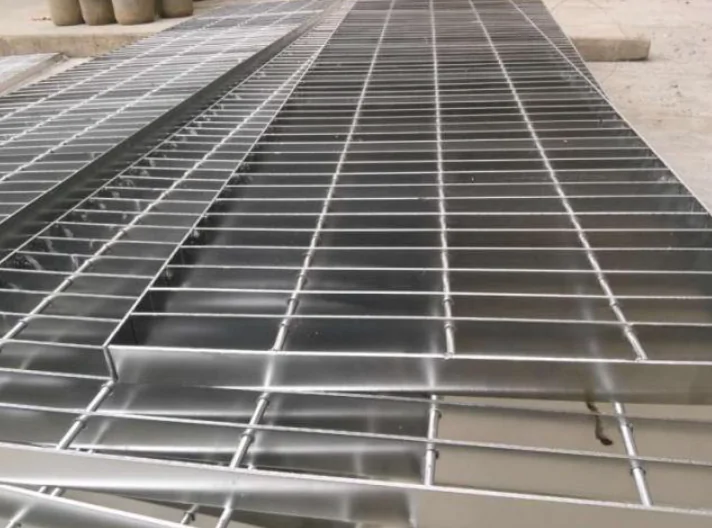Introduction
Stainless steel grating is a popular choice for industrial and commercial settings, and 316 grade is a high-quality option. In this article, we will provide a brief introduction to 316 stainless steel grating, including its properties and benefits. This information will be valuable for those considering using this material in their projects.
Its corrosion resistance and durability make 316 stainless steel grating a top choice for many industries. In this article, we will delve deeper into the properties and benefits of this material, as well as provide examples of its typical applications. Keep reading to learn more about 316 stainless steel grating.
1. About 316 stainless steel gratings

316 stainless steel grating is a type of industrial flooring made up of bearing bars, deep rectangular cross bars, and stainless steel material. These components are welded together to form a solid and durable surface with bearing bar spacings ranging from 19/16″ to 7/16″.
316 stainless steel is known for its corrosion resistance and is often used in corrosive environments or for decorative purposes. Stainless steel bar grating is used in various industries, including construction, food processing, and water treatment facilities. It is a versatile, cost-effective option for flooring, drainage, and safety needs.
2. Different types of 316 stainless steel gratings

Welded 316 stainless steel grating
It is made by welding the bearing bars and cross bars together to form a grid pattern. It is commonly available in sizes such as 4′ x 8′ with a pitch of 25mm and bearing bars at 1-3/16″ o.c. (19 – SGSS-4).
Press-locked 316 stainless steel grating
It was created by notching the bearing and cross bars and pressing them together to create a seamless, smooth surface. It is often used in flooring applications and is available in sizes such as 4′ x 8′ with a pitch of 25mm x 100mm x 5mm serrated, ASTM standard.
Swage-locked 316 stainless steel grating
Similar to press-locked grating, it is made by cold forging the cross bars into the bearing bars to create a secure lock. It is commonly used in oil field flooring and is available in sizes such as 4′ x 8′ with a pitch of 25mm and bearing bars at 1-3/16″ o.c. (19 – SGSS-4).
In addition to these types, 316 stainless steel grating can come in a mill finish or a smooth top. It can be used with saddle clips made of 316 stainless steel and secured with 12mm mild steel bolts, nuts, and washers.
3. Benefits of 316 stainless steel grating

Corrosion resistance
316 stainless steel is known for its excellent corrosion resistance, making it a popular choice for outdoor or corrosive environments.
Durability
The welded, press-locked, or swaged construction of 316 stainless steel grating allows it to withstand heavy loads and impact.
Easy installation
316 stainless steel grating can be easily installed with minimal tools and equipment.
Low maintenance
The corrosion-resistant properties of 316 stainless steel grating mean that it requires minimal maintenance, saving time and money in the long run.
Customization
316 stainless steel grating is available in various sizes and styles, including welded, press-locked, and swage-locked options, as well as bearing bar centers and drawn cross bars or swaged cross bars. This allows for customization to fit specific project needs.
Versatility
316 stainless steel grating can be used in various applications, including flooring, drainage, safety, and decoration, making it a versatile choice for many industries.
Safety
The perpendicular cross bars of 316 stainless steel grating provide a slip-resistant surface, making it a safe choice for walkways and other pedestrian areas.
4. Tips for using 316 stainless steel grating

1. Determine the appropriate size and style of 316 stainless steel grating for the intended application. Consider factors such as the size and weight of the objects that will be placed on the grating, the type of environment it will be used in, and the desired appearance.
2. Measure the area where the grating will be installed to ensure that you have the correct material.
3. Consider the spacing of the metal bars, also known as the bearing bar centers, and choose a grating material with the appropriate spacing for your needs.
4. Choose a grating material with the appropriate bar spacing for the intended application. For example, if the grating will be used in a chemical processing plant, a material with smaller bar spacing may be necessary to prevent small objects or debris from falling through.
5. Install the 316 stainless steel grating according to the manufacturer’s instructions. This may involve welding or securing the grating to a supporting structure using bolts or other fasteners.
6. Properly maintain the grating by cleaning it regularly and inspecting it for any damage or wear. Replace any damaged or worn grating material to ensure the safety and stability of the surface.
Conclusion
Following the tips outlined in this article, you can effectively utilize 316 stainless steel grating in your projects. Whether it’s for its corrosion resistance or strength, this material has numerous benefits that make it a top choice for many industries. Consider these tips when working with 316 stainless steel grating for the best results.


